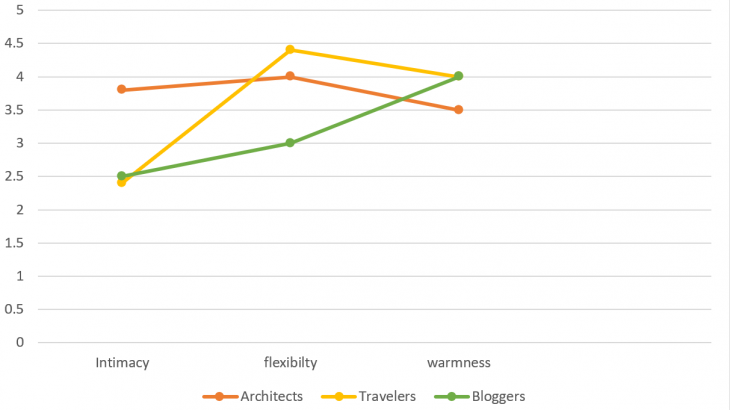“Sense of place” of Thermodynamic Approaches in climate-oriented Architecture
Post occupancy evaluation in Cehsa futura
By: Fatemeh Nejati
Faculty: Jordi Vivaldi
The idea of spirit of place has echoed through the ages. It derives from an ancient and widespread belief that particular bits of the world are occupied by gods, or spirits who have to be propitiated. This was a key element of Roman religion. In order to the western and eastern philosophers, the “Sense of place” have discussed as an important parameter to understand the phenomenology oy of the place. Genius loci is the Latin for the spirit or guardian deity of a place and is a phrase that has been adopted in English and into other languages and achieved a broad degree of popularity. A quick Google search for genius loci brought up links to a recent art exhibition featuring the work of Chinese artist Ai Weiwei and others, an American kick-starter campaign for a book on tales of the spirit of place, the name of travel company specializing in Italy, and an art project in Weimar in Germany.
Architecture belongs to poetry, and its purpose is to help man to dwell. But architecture is a difficult art. To make practical towns and buildings is not enough. Architecture comes into being when a total environment is made visible, to quote the definition of “Susanne Langer”. In general, this means to concretize the Genious loci[1]. When the fire dies, its remains become cold, just as the body becomes cold when a person dies. Drawing a parallel to the concept of the soul that animates the physical body of the person, the fire, then, is the animating spirit for the body of the house. [2]
Key words: Sense of place- spirit of place- Post occupancy evaluation- Chesa Futura
[1]Norberg-Schulz. Christian.1980- Genius Loci: Towards a Phenomenology of Architecture
[2] Luis Fernández-Galiano. 2000- Fire and Memory (on Architecture and Energy)
Hypothesis:
The phenomenology approach of sense of place in its existential and performance sides in cehsa futura building which is a climate-oriented building could develop. researching on post occupancy evaluation (building in its urban context) by using a survey from visitors.
Methodology:
Inductive research in this study moves from specific observations of the sense of place of the residents by survey tools. The hashtag of Chesa Futura is full of the beautiful pictures in all the seasons but the question is What is the sense of place of Chesa Futura for its visitors and residents? The post occupancy evaluation is the main approach of this research. Instagram was chosen to find people who are living in Chesa Futura. The main question is: Are the climate consideration Approach of the building bring you warmth and intimacy in your daily lifestyle? Are the passive heating and cooling system give you comfort?
Three specific messages about the sense of intimacy, flexibility and warmness of Chesa futura in urban context for 44 people (Architects, Bloggers and travelers) were sent

The collaborators Jobs. Nejati2021

The measurement of the paradigms of sense of place in Chesa futura. Nejati2021
Conclusion:
In this paper, the Spirit of place approach was discussed as a means to move away from the duality between culture and environment in Architecture to post occupancy evaluation approach. Unlike computational or mental representations about human–environment relationships, the sense of place is: (1) relational – a a network of relations between environment, culture, body and mind; (2) situational –time direct perception-action processes actualize relations between environment, culture, body and mind; and (3) dynamical –they provide change through pathways of actualized perception-action processes. The sense of place approach has many implications for the methods used to assess human–environment relationships in Architecture. This paper showed through the example of the Chesa futura building how to approach sense of place from post occupancy approach. However, this approach is not complete and has both strengths and weaknesses. To this end, how different positions on science and research can come together to address much of the complexity facing human-occupies dynamics in the openness to alternative metatheories or worldviews of human–environment relationships,
Acknowledgements:
44 anonymous people in social media who empathize with the research and collaborate to collect the data.
“Sense of place” of Thermodynamic Approaches in climate-oriented Architecture is a research of IAAC, Institute for Avdanced Architecture of Catalonia developed at MAEBB 2021. for more information contact via Email.
Student: Fatemeh Nejati (linked-in: Fatemeh-Nejati)
Faculty: Jordi Vivaldi